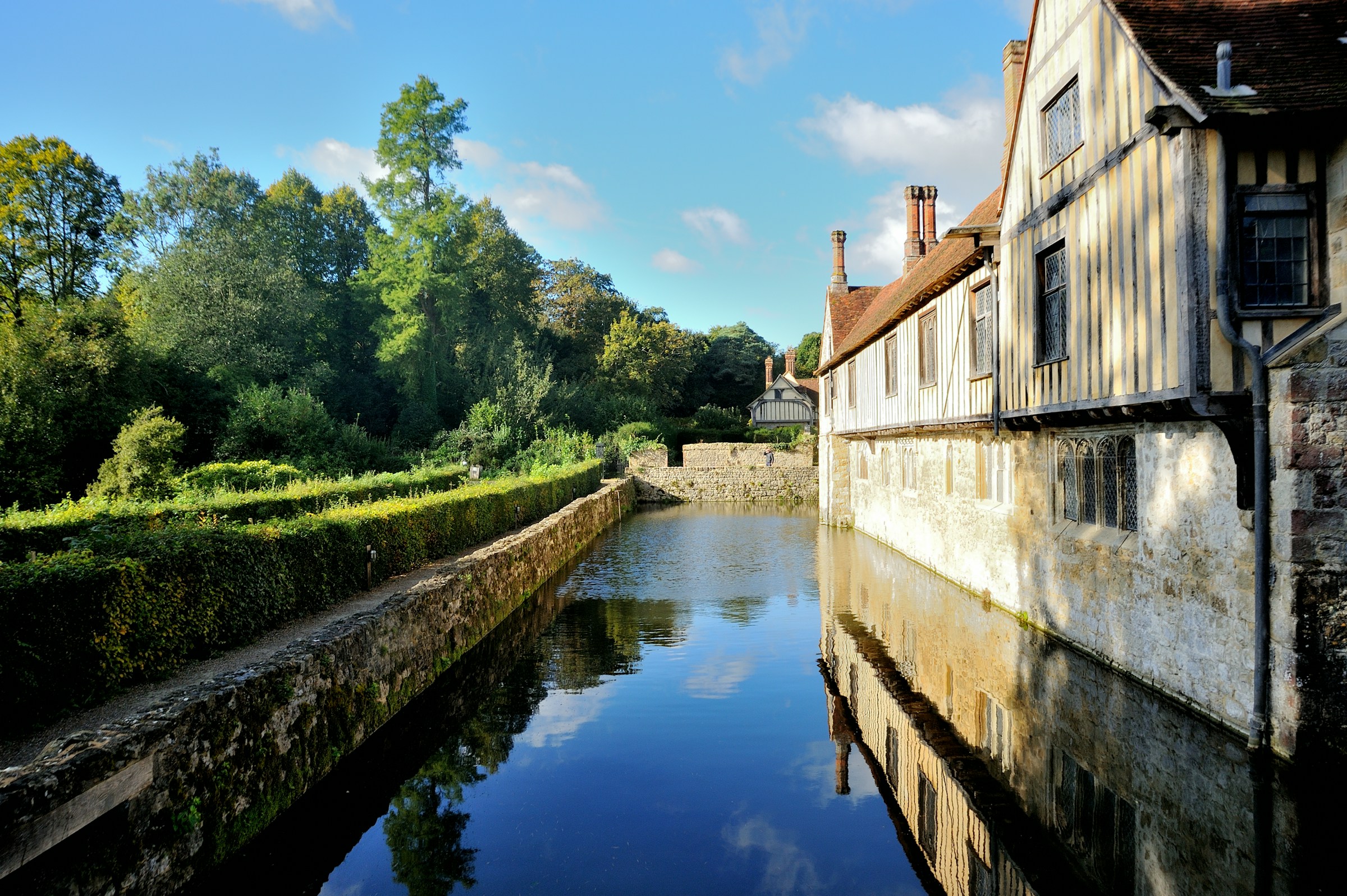How do you implement a low-energy cooling system in a UK historic home?

As you sit in your historic UK home, you may find yourself musing about how to make it more energy-efficient, especially when it comes to heating and cooling. While newer homes often come equipped with energy-saving technologies, older and historic buildings can be a little trickier to update. However, with a little creativity and some handy engineering, you can transform your centuries-old domicile into a paragon of modern efficiency.
Retrofitting historic homes with passive cooling systems
Typically, historic homes are designed with passive heating and cooling systems. These systems, which are entirely dependent on the building's structure and design, can perform surprisingly well during different seasons. However, they are not always enough to maintain a consistent temperature year-round and provide the comfort you desire.
A lire en complément : What are the safest and most efficient electrical panel upgrades for an old UK home?
Before we delve into the details, let's first understand what passive cooling is. In essence, passive cooling is an approach to maintaining a comfortable indoor temperature without the use of energy-consuming mechanical equipment. It involves using a building's architecture to reduce heat gain and promote cooling through natural ventilation, radiant cooling, and evaporation.
Improving your historic home's passive cooling system involves a few steps. First, you should identify and understand the original passive cooling strategies used when the house was built. This could include ventilation strategies, the building orientation, and shading devices. Next, you would assess the condition and effectiveness of these strategies and determine what improvements can be made. This can be done through a professional energy audit.
Cela peut vous intéresser : What's the most efficient placement for air purifiers in a UK open-plan living space?
Even though your historic house was not built with modern cooling systems in mind, there are ways to adapt it. Passive cooling techniques can include increasing insulation in the walls and roof, adding shading devices to windows, and improving natural air ventilation.
Incorporating high-efficiency heat pumps
While passive cooling can significantly reduce the need for mechanical cooling, there may still be times when a boost is needed, especially on those sweltering summer days. This is where high-efficiency heat pumps come into the picture.
Heat pumps are an efficient way of cooling homes because they remove heat from a building rather than creating cool air. They work by extracting heat from the air outside and pumping it indoors during the winter, and doing the reverse in the summer. It's worth mentioning that heat pumps also provide heating during the cooler months, making them a versatile solution for historic homes.
However, installing a heat pump in a historic home isn't always straightforward. You'll need to consider factors such as the building's structure and aesthetics, as well as the comfort and energy efficiency you're aiming to achieve. In some cases, you may need to consult with a professional to ensure the installation is done correctly and the overall aesthetics of your historic home are preserved.
Implementing a dehumidification system
A key part of maintaining a comfortable temperature in your home is managing the humidity levels. In the UK, where humidity can be high, a dehumidification system can significantly enhance the effectiveness of your cooling system.
Dehumidification systems work by removing excess moisture from the air, making the room feel cooler and more comfortable. In addition to increasing your comfort, dehumidification systems also help to prevent damage to your home that can be caused by excess moisture, such as mould and mildew growth.
A dehumidification system can be integrated with your heat pump, creating a comprehensive heating, cooling, and dehumidification system. Alternatively, standalone dehumidifiers can be used in specific areas of your home where humidity is a problem.
Upgrading windows and insulation
The windows and insulation in your historic home play a significant role in its energy efficiency. Old, drafty windows and insufficient insulation can let heat in during the summer, making your home uncomfortably warm.
Upgrading to energy-efficient windows and improving insulation can help keep your home cool in the summer and warm in the winter. For windows, consider double glazing, which has an air gap between two panes of glass to reduce heat transfer. For insulation, materials like spray foam can be used to fill gaps and cracks in your home's structure, reducing heat transfer and improving your home's overall energy efficiency.
However, when making these upgrades, it's essential to consider the historic character of your home. For example, you may need to find custom solutions that preserve the look of your original windows while improving their efficiency.
Geothermal cooling systems
If you're looking for a more advanced solution, geothermal cooling systems can be a great option. These systems harness the earth's temperature to provide heating, cooling, and water heating. While the upfront costs of geothermal systems can be high, they can provide significant savings in the long run due to their high energy efficiency.
Geothermal systems work by pumping a water-based solution through pipes buried in the ground, where it is either heated or cooled depending on the season. This temperature-regulated water is then used to heat or cool your home.
Installing a geothermal cooling system in a historic home can be quite a project, requiring careful planning and professional installation. However, once installed, these systems can provide comfortable, energy-efficient heating and cooling for your home, all while preserving the historic character of your beloved abode.
The Role of Heat Recovery and Air Exchange Systems
To maintain good indoor air quality in a historic home, a heat recovery or air exchange system can be a crucial addition. Heat recovery systems, also known as heat exchangers, work by extracting heat from exhaust air leaving the building and transferring it to fresh incoming air. This process ensures a regular supply of fresh air, reduces the demand on your heating system, and enhances energy efficiency.
There are two main types of heat recovery systems suitable for historic buildings – Mechanical Ventilation with Heat Recovery (MVHR) and Exhaust Air Heat Pump (EAHP). MVHR uses a heat exchanger to warm incoming fresh air with the heat from outgoing stale air. On the other hand, an EAHP extracts heat from exhaust air to warm incoming fresh air and provide hot water.
Although heat recovery systems can greatly improve the energy efficiency of historic homes, their implementation must be carefully considered. Inappropriate installation can lead to problems such as airtightness and condensation, which can damage the building's fabric. Therefore, it's recommended to involve a professional in the planning and installation process.
As a part of this process, you might need to carry out small-scale modifications. However, it's crucial to maintain the architectural integrity of the building as much as possible. Remember, the goal is to achieve a balance between modern comfort and the preservation of historic charm.
Case Studies: Low Energy Cooling in Historic Buildings
One way to understand how to implement low energy cooling systems in historic homes is to look at successful case studies. These examples can provide valuable insights into the processes, challenges, and results of such installations.
One such case study involves a 19th-century mansion in Oxfordshire, where a ground source heat pump was installed as part of a broader renovation project. The heat pump provides both heating and cooling to the house, contributing significantly to the home's energy efficiency. The fact that the heat pump’s infrastructure is hidden underground ensures that it doesn't interfere with the mansion's historic aesthetics.
Another example is a Victorian terraced house in London. The owners used a combination of passive house principles and an air source heat pump to create a comfortable and energy-efficient home. They retained the original facade of the building while making substantial changes to the interior. The result is a house that maintains its historic charm while benefiting from modern heating and cooling systems.
Conclusion
Implementing a low-energy cooling system in a historic UK home can be a complex process, entailing several factors such as insulation, air exchange, heat pumps, and even dehumidification. However, the benefits of such an endeavor are manifold, enhancing the home's energy efficiency, improving indoor air quality, and creating a comfortable living environment year-round. Furthermore, by incorporating elements of the passive house model, homeowners can strike a balance between modern comfort and preservation of historical character.
While every historic home is unique and may require a customized approach, the principles and technologies discussed in this article should provide a good starting point. Whether you choose to implement passive cooling, heat recovery, or even a geothermal system, remember that preserving the original charm of your historic home is just as important as enhancing its functionality. With careful planning and expert assistance, integrating low-energy cooling systems in historic homes is entirely feasible, as numerous successful case studies have shown.
